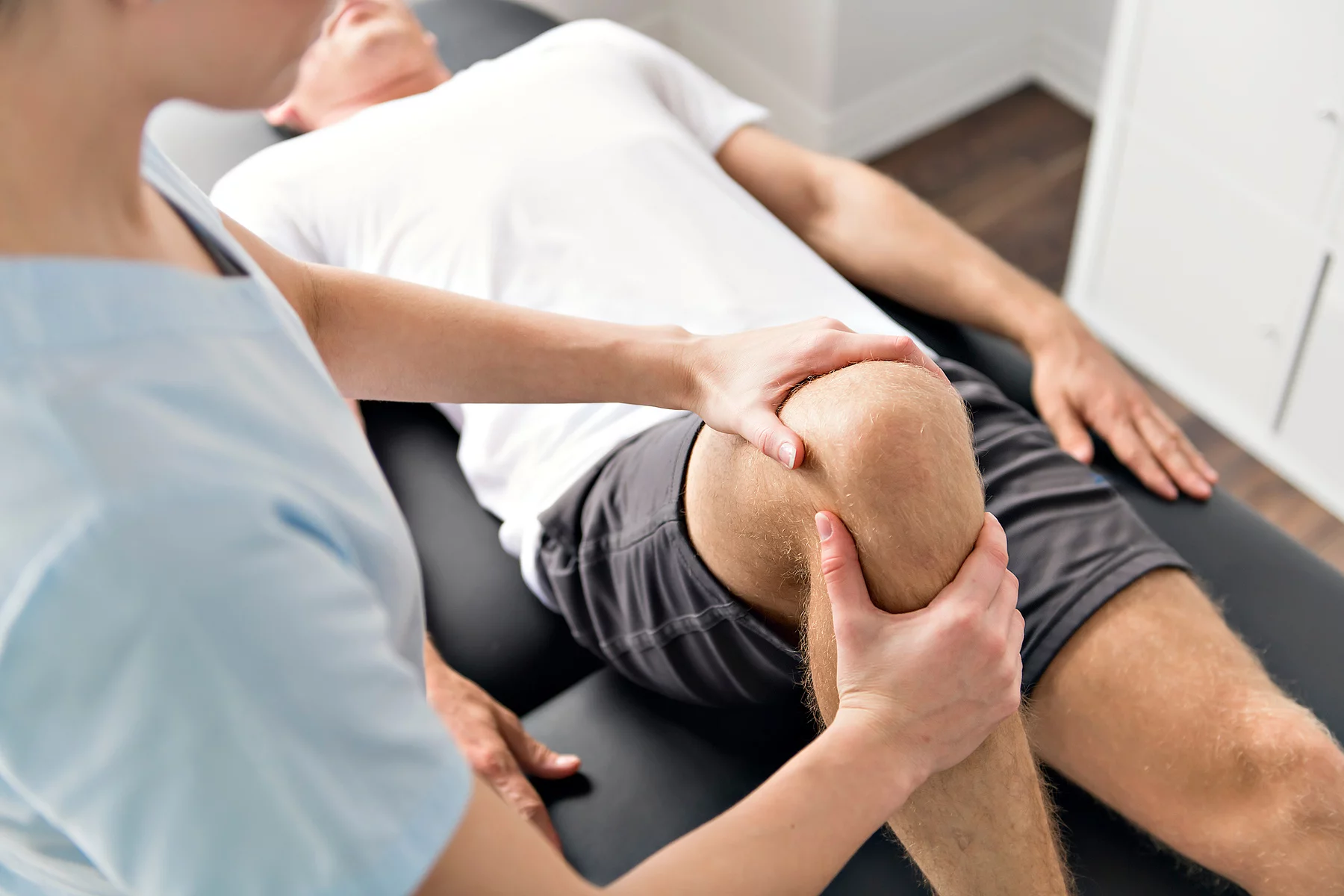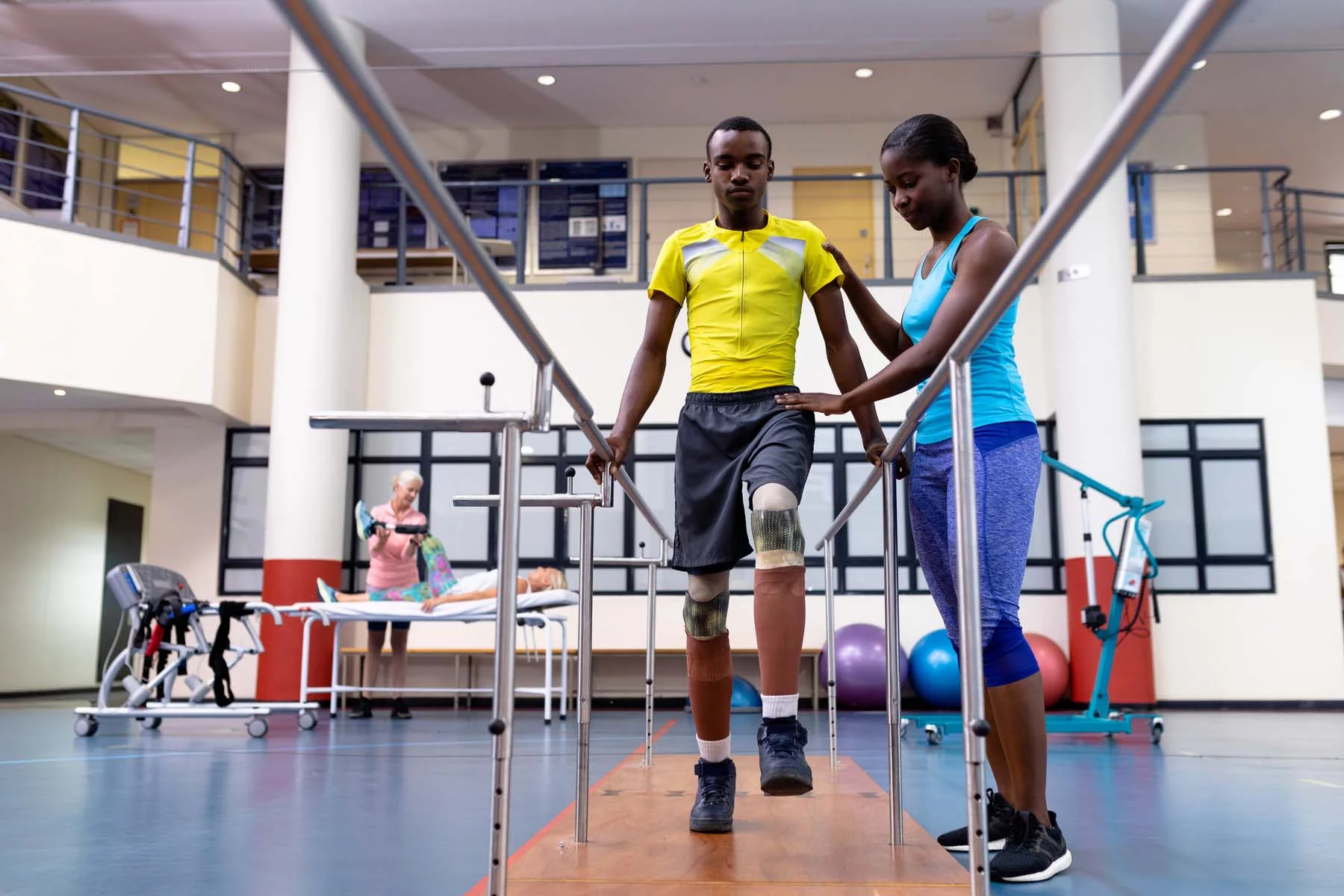Physiotherapists play a valuable role in recovery from illness and injury as well as offering preventative treatments to keep us in good shape. If you’re living in the Netherlands, the good news is that you can access many physical therapy treatments through the Dutch healthcare system. You can cover costs by taking out a health insurance plan that includes supplementary coverage for physiotherapy.
This guide talks you through what you can expect, where to go and what to do if you need physical therapy in the Netherlands. Sections include:
- The Dutch healthcare system
- Physical therapy in the Netherlands
- Accessing physical therapy in the Netherlands
- Finding a physical therapist in the Netherlands
- Visiting a physical therapist in the Netherlands
- Costs of physical therapy in the Netherlands
- Insurance for physical therapy in the Netherlands
- Emergency physical therapy in the Netherlands
- Alternatives to physical therapy in the Netherlands
- Useful resources
Cigna Global
Enjoy peace of mind while living in the Netherlands with Cigna Global’s long-term international health insurance plans (12+ months). Get tailored coverage, direct billing with many providers, complex case management, and global care on demand, with access to a network of 1.5+ million doctors, specialists, and therapists.
The Dutch healthcare system
The Netherlands has one of the most accessible healthcare systems in the world. Since 2006, the country has had a universal social health insurance policy, underpinned and operated by private insurers and service providers that provide mandatory coverage for all. The system is managed by the Ministery of Health Welfare and Sport (Ministerie van Volksgezondheid, Welzijn en Sport).

As a minimum, expats planning to stay long-term must take out basic Dutch health insurance (basisverzekering) within four months of arriving in the country. However, these basic policies only cover a specific range of treatments and services. This typically does not include physical therapy except in certain specific situations. Therefore, to gain access to treatment, you will need to take out supplementary coverage from your insurance provider. Treatment is typically free for children aged under 18.
For more information, be sure to read our guide to health insurance in the Netherlands.
Physical therapy in the Netherlands
Physiotherapy (fysiotherapie) is widely available in the Netherlands. According to 2020 statistics, there are 35,790 physiotherapists operating in the country. This works out at 1.99 therapists per 1,000 people. This means that the Netherlands ranks third highest globally behind Norway and Germany.

Nearly half of Dutch physiotherapists belong to the Royal Dutch Society for Physiotherapy (Koninklijk Nederlands Genootschap voor Fysiotherapie – KNGF). This is the main membership body in the Netherlands. The KNGF runs the Central Quality Register for Physiotherapy. All practicing physiotherapists in the Netherlands need to sign up for this.
According to research from 2008, the back is the most frequently treated body area by Dutch physiotherapists. The neck, knee, and shoulder are also commonly treated.
Types of physiotherapy in the Netherlands
There are many different types and specialties of physiotherapy in the Netherlands. These include:
- Manual therapy (manueel therapie) – general physiotherapy that involves the kneading and manipulating of muscles and joints
- Cardiorespiratory therapy (cardiorespiratoire therapie) – focuses on heart and lung health
- Sports therapy (sporttherapie) – deals with the prevention of and recovery from sports-related injuries and illnesses
- Orofacial therapy (orofaciale therapie) – concentrates on the face, neck and tongue muscles to improve bite, breathing and facial posture
- Pediatric physiotherapy (pediatrische therapie) – specializes in physiotherapy techniques and treatment for children
- Geriatric physiotherapy (geriatrische therapie) – deals with treatment and prevention of health problems specific to old age
- Oncoligical physiotherapy (oncologische therapy) – deals with the physical recovery of cancer patients
Some specialist therapies have their own membership organizations, for example, the Dutch Association of Orofacial Physiotherapy or the Dutch Association for Manual Physiotherapy.
Accessing physical therapy in the Netherlands
Since 2006, people in the Netherlands have been able to directly access physiotherapy treatment without a doctor referral. You will need a health insurance plan that covers physiotherapy. Otherwise, you will have to pay directly for treatment. However, even with additional coverage, you will still need to check with the treatment provider to ensure you can claim back on your insurance.

In certain situations, you may be eligible for partially reimbursed treatment through basic health insurance if you have a chronic condition. However, you will need a referral letter from your doctor or medical specialist to send to your insurance company.
Finding a physical therapist in the Netherlands
You are free to choose your own physiotherapist in the Netherlands. There are many ways of searching for and finding therapists, including:
- Searching the BIG register, which is the Dutch healthcare providers register. You can search by name, specialism or BIG number.
- Finding physiotherapists, including online support and appointment time availability, on the Doctena website.
- Checking our listings guide for businesses and services in the Netherlands.
- Looking on the Zorgkaart Nederland website, which lists over 19,000 physiotherapists and includes patient ratings for many (in Dutch).
- Using the Dutch Yellow Pages telephone directory (in Dutch).
- Asking your family doctor (huisarts) for recommendations.
Finding an English-speaking physical therapist in the Netherlands
Most healthcare professionals in the Netherlands speak English to a reasonable standard. Therefore, it is not usually a problem to find a Dutch physical therapist who will understand you. There are also expat services that cater to English-speaking patients, such as the Expat Medical Center in Amsterdam.
You can usually find a full list of English-speaking healthcare professionals and services through your embassy or consulate in the Netherlands.
Visiting a physical therapist in the Netherlands
You will typically need to schedule an appointment to see a physio in the Netherlands. Most practices will take appointments by phone. Some will also book appointments online. Waiting times vary across the different specialties and depend on factors such as session availability and how urgently you need treatment. If it’s not an emergency, you may have to wait a few weeks to be seen.
When attending an appointment, arrive a few minutes early and bring along your health insurance card. Appointments typically last for around 30–60 minutes. At your first session, the therapist will usually assess you and create a treatment plan which may include:
- Exercises carried out during sessions
- Additional exercises or activities to be carried out at home
- Manipulation of joints and muscles to treat health problems

Your therapist may tell you during the first session how many sessions they will provide, although in some cases it will depend on how you progress. The frequency of appointments will also depend on your situation.
Physiotherapists may provide advice, particularly concerning preventative techniques. However, they don’t usually write prescriptions for medicine. They may also refer you to your doctor or other medical specialists if needed.
Costs of physical therapy in the Netherlands
Physiotherapy costs in the Netherlands vary depending on the nature of the treatment. There is no set fee and, because most therapists operate privately, they are free to set their own rates. Typical costs range from €35–€70 per session, however, some may charge more. You are more likely to pay higher fees in big cities such as Amsterdam and The Hague.
What you end up paying will also depend on your health insurance. Generally speaking, you will need to take out a supplementary coverage package from your insurance provider that will cover the cost of treatment beyond your deductible. However, in certain circumstances, basic health insurance packages will cover a limited amount of physical therapy, such as:
- Up to 18 sessions of pediatric physiotherapy, or unlimited sessions for children with chronic conditions
- Full costs from the 21st session for adults with a recognized chronic condition
- First nine sessions of pelvic physiotherapy in the case of urinary incontinence
- Up to 12 remedial sessions for osteoarthritis of hip or knee joints
- 37 sessions for sufferers of intermittent claudication
- Maximum of 70 sessions in the first year if you have COPD. Sessions in subsequent years will depend on the severity of the condition
Beyond this, read the policy wording of your supplementary cover to ensure you know what is available under your coverage. Payments and claims processes vary across insurers. Some take care of bills directly on your behalf, while others require you to pay upfront and claim reimbursement. Read here (in Dutch) for further information.
Insurance for physical therapy in the Netherlands
You are free to choose from one of the many health insurance companies that operate in the Netherlands. This includes both Dutch and international health insurance providers, such as:
If you’re searching for a specific treatment or supplementary coverage, it pays to do your research ahead of time when comparing insurers. Some will offer comprehensive plans, while others may only cover a set number of therapy sessions. If you’re unsure of which insurance product is right for you, use a comparison website such as Independer to quickly check your options.
Emergency physical therapy in the Netherlands
If you are recovering from a serious injury or hospital treatment in the Netherlands, you may be able to get partial reimbursement for physical therapy treatment through basic health insurance. Coverage usually starts from the 21st session for recovery from serious illnesses, bone fractures and scar tissue injuries. For a full list of conditions, see here.

In some instances, you may be referred for physiotherapy treatment by the medical team that treats your emergency. Otherwise, you can refer yourself. However, bear in mind that you will need a referral letter for reimbursement through the basic plan. If you have supplementary insurance coverage, check what your insurance covers and for how many sessions.
Alternatives to physical therapy in the Netherlands
In addition to the treatments mentioned above, there is a range of other services available in the Netherlands. Before using any of these services, be sure to check what is – and isn’t – covered by your supplementary health insurance plan to avoid any unforeseen costs.
Osteopaths in the Netherlands
Another type of manual therapy, osteopathy (osteopathie) is a relatively new field of treatment in the Netherlands. It approaches the body as a unit from three different angles: the musculoskeletal system, the organs, and the skull. Treatment consists of restoring movement by means of soft manual adjustments.
When considering osteopathy, it’s important to do your homework before booking a consultation. Serious practitioners register with the Dutch Association for Osteopathy (Nederlandse Vereniging voor Osteopathie – NVO) or the Dutch Register for Osteopathy (Nederlands Register voor Osteopathie – NRO). However, your safest bet is an osteopath registered with the Dutch Osteopathy Federation (Nederlandse Osteopathie Federatie – NOF), which only accepts those with a medical education.

Session costs vary but are around €100 for a 60-minute session in Amsterdam. However, reimbursement is only usually through the most comprehensive health insurance packages.
Chiropractors in the Netherlands
Chiropractic therapy is another alternative manual therapy. It deals with the neuromuscular system – in other words, symptoms, and abnormalities in the nervous system that can cause muscle problems. Techniques include spinal manipulation and massage to relieve pain, as well as ultrasound therapy to treat some conditions.
There are over 270 practicing chiropractors in the Netherlands, all registered with one of the professional bodies in the country. These include the Dutch Chiropractors Association (Nederlandse Chiropractoren Associatie – NCA) and the Dutch Chiropractic Federation (DCF). Most chiropractors will accept either doctor referrals or self-referrals.
Similar to osteopathy, chiropractic treatment costs vary (usually between €40-80 per session). They are also usually only covered by extended insurance packages.
Massage therapists in the Netherlands
There is a wide variety of massage therapists across the Netherlands, including practitioners of deep tissue massage, Swedish massage, Thai massage, Chinese massage, and aromatherapy massage. Masseurs/masseuses in the Netherlands are viewed as providers of complementary care. They often come under ‘hair and beauty’ rather than ‘health’ in listings, although some may specialize in health treatment.

You can find and book a session with a Dutch massage therapist of your choosing, although you will typically need a referral from a medical specialist showing that you need treatment if you want to claim it on your health insurance. Otherwise, expect to pay in the region of €30-65 for a 45-60 minute session.
Massage therapy is not a regulated profession in the Netherlands. Therefore, you will need to be careful and do your research in order to find someone properly qualified. You can check credentials and find bona fide professionals by:
- Checking to see if the therapist is listed on the BIG register
- Searching for regulated massage therapists through the Dutch Society for Sports Massage (Nederlands Genootschap voor Sportsmassage – NGS)
- Looking for therapists and checking customer ratings on Google or the Treatwell website.
Useful resources
- Ministry of Health, Welfare, and Sport – Dutch government ministry responsible for public healthcare
- Royal Dutch Society for Physiotherapy (Koninklijk Nederlands Genootschap voor Fysiotherapie – KNGF) – main association for Dutch physiotherapists (in Dutch)
- BIG register – list of registered healthcare professionals in the Netherlands
- Doctena – search for physiotherapists in the Netherlands
- Zorgwijzer – compare Dutch health insurance plans







